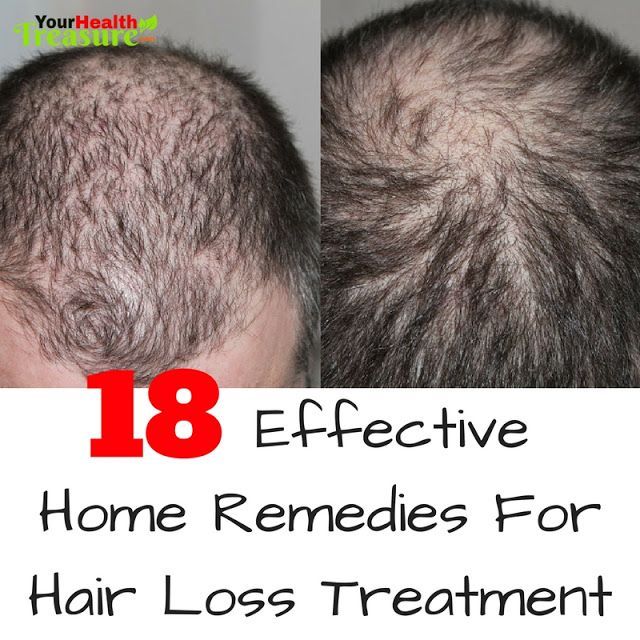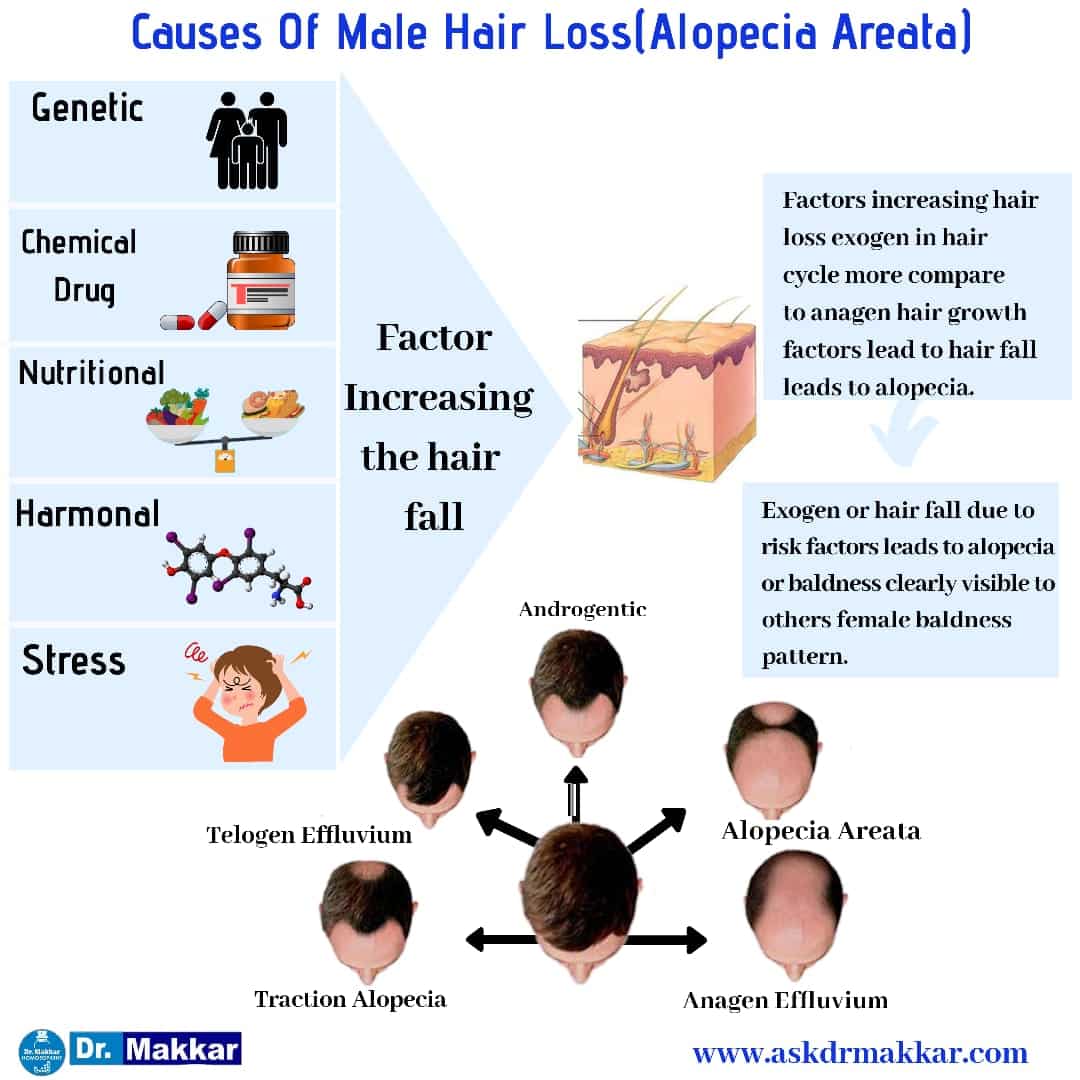Isn’t Hair Loss Just A Cosmetic Issue
Male pattern hair loss can have a negative psychological impact. Studies have shown that hair loss can be associated with low self-esteem, depression, introversion, and feelings of unattractiveness. This is reinforced by attitudes in Western society, which place great value on youthful appearance and attractiveness. Some studies have shown that based on appearance alone, men with hair loss are seen as less attractive, less assertive, less likeable, and less successful than men without hair loss.
Procedures Used To Treat Male
Depending on the location and extent of your hair loss, your dermatologist may recommend one of these procedures:
Hair transplant: If youre looking for a permanent solution, you may want to consider a hair transplant. This procedure no longer involves moving plugs of hair from one part of your scalp to another. Today, a hair transplant can give you permanent, natural-looking results.
Platelet-rich plasma : While PRP is not a permanent solution, maintenance treatments can help you maintain results.
PRP can be used alone or given before a hair transplant to improve results.
If your dermatologist recommends PRP for you, heres what you can expect. A small amount of your blood would be drawn and placed into a machine that separates your red blood cells from the plasma.
Your plasma is then injected into your scalp. This takes about 10 minutes.
You will need to return for more injections. For the first three months, you return once a month. Then you return once every three to six months.
Within a few months, PRP can help lessen hair loss. Soon after, some patients see thickening of their hair or regrowth.
Genetics And Androgenetic Alopecia
These data suggest that other autosomal genes may also be contributing to the phenotype. Several studies have examined the other candidate genes and chromosomal regions that can contribute to the hair loss.
Genetic association studies of 5 alpha reductase genes SRD5A1 on chromosome 5 and SRD5A2 on chromosome 2, using dimorphic intragenic restriction fragment length polymorphisms in 828 families, failed to show an association between these genes and MAA . However the role of the 5 alpha reductase enzyme in MAA is evident from its role in the metabolism of testosterone to dihydrotestosterone and the effect of 5 alpha reductase inhibitors in treating hair loss. The cytochrome p450 alpha aromatase enzyme has also been found to contribute to androgenetic alopecia. Aromatase diminishes intra-follicular testosterone by catalysing the conversion of testosterone to estradiol. Differences exist in the expression of aromatase in balding and non-balding scalp . Yip et al suggest that the aromatase gene might predispose to hair loss in women .
Don’t Miss: Can Hrt Cause Hair Loss
What Are The Symptoms Of Male Pattern Baldness
Male pattern baldness usually starts after puberty and develops gradually.
You may notice your hair gradually thinning at your temples and your hairline slowly receding. The hair on your crown may also get thinner and you may eventually develop a bald patch on the top of your head, which gets bigger over time. If hair loss continues, you may develop a horseshoe pattern of hair growth around the back and sides of your head.
Male pattern baldness doesnt usually cause your eyebrows, eyelashes or the hair at the sides and back of your hair to fall out. Hair loss in these areas is usually caused by other medical conditions. If you arent sure, or youre concerned about hair loss, see your doctor for information and advice.
Effective Ways To Stop Hair Loss In Men

Below is the list of 20 effective solutions to help reduce or prevent hair loss:
You May Like: What To Do About Hair Loss From Stress
How Is Hair Loss Diagnosed
In some cases, the cause of hair loss is obvious for example, if you’re losing hair while going through chemotherapy. Other times, your healthcare provider will need to do some detective work to figure out whats causing your hair loss.
To determine the correct diagnosis, your provider may:
- Ask about your family history, including if any relatives experienced hair loss and at what age.
- Look at your medical history.
- Order blood tests to measure thyroid function and iron levels.
- Examine your scalp for signs of infection.
- Take a scalp biopsy to check for skin disease.
What Causes Hair Loss In Men 14 Common Causes
When it comes to men losing their hair, its a darn common experience.
Nearly 40% of guys in their 30s will experience some amount of hereditary hair loss, with over 50% experiencing it by the time they turn 50. Hair loss can start as early as puberty, and an estimated 50 million American men experience male pattern baldness, known scientifically as androgenic alopecia.
While genes play the largest role, hormones, diet, medications, and a few other causes can also be to blame for hair loss in men.
You May Like: Can Trt Cause Hair Loss
Talk To A Hair Loss Specialist Near You
For some men, hair loss is not an issue but for many, hair loss not only makes them look older than they are, but it also robs them of their self-confidence. They become self-conscious about their appearance and withdrawal from gathering with friends. If your hair is beginning to thin or you have severe baldness, hope is not lost.
Today more than ever there are groundbreaking treatments and solutions that can be tailored to your specific type of hair loss. Transitions member hair replacement and hair loss treatment centers near you provide private, no-obligation consultations. A professional hair restoration specialist will work one-on-one with you to answer all your questions completely and fully and to help you determine which hair loss solutions is right for your particular situation.
Diagnosis May Require Some Sleuthing
Diagnosis begins with a detailed patient history, possible triggering events, and a list of relatives with hair loss. Next comes an examination of the scalp. A dermatologist may perform a hair pull to see how many strands break off, or use a device to inspect hairs microscopically without removing them. The doctor may also order blood tests and check the patient for skin disorders or signs of hormonal problems .
Also Check: How To Thicken Your Thin Hair
Affected Areas By Hair Loss
Fortunately, only the top of the scalp is affected by androgenic alopecia in typical male pattern baldness and the Ludwig pattern of hair loss in women. Male pattern baldness typically appears in receding hairline or empty bald spot on top of the scalp while female hair loss at crown mostly gets visible thinning over that area and sometimes throughout the scalp including the hairline. The back and side are sparred. The hairs from the back and sides can be moved to any region on the body and continue to grow.
The hairs on the top will still fall out no matter where they are move on the body. This is the principle of “donor dominance” and means that the donor hairs retain their characteristics no matter where they are relocated to. This is fortunate to individuals seeking hair restoration surgery. We can transplant these non-affected hairs to any part of the scalp and they will grow for the remainder of a person’s life unaffected by the DHT.
Hair Loss Due To Medications
Hair loss is a side effect of a number of medications taken for common health problems. Blood-thinning medications, oral contraceptives, drugs for depression, NSAIDs, and beta and calcium channel blockers can all lead to thinning hair or baldness. Too much vitamin A and vitamin A-based drugs called retinoids can cause hair loss as well. Some chemotherapy drugs used to treat cancer are known to cause total hair loss as they work to destroy cancer cells. Just as hair usually grows back after chemo, it should also grow back once you stop taking any medication that causes hair loss.
Recommended Reading: Does Bed Head Cause Hair Loss
Will Stress Make Me Go Bald Quicker
Stress can cause hair loss but hair loss caused by stress is rarely permanent. Whether stress speeds up the process of hereditary baldness is unknown.
There is a form of hair loss that can be caused by severe stress called telogen effluvium, which interrupts the growth cycle of your hair follicles causing hair to shed. But in the long term this process should correct itself.
Conventional Hair Loss Treatment

There are several options when it comes to conventional treatment of hair loss, all of which come with significant side effects unless you opt for a wig or hair piece. The most common conventional hair loss remedies include topical minoxidil, oral finasteride, topical or oral hormones and steroids, hair transplants, and hair restoration surgery.
An example of very commonly used and conventional topical treatment is minoxidil. One of the most well-known versions is Rogaine. Conventional hair growth products like Rogaine are available without a prescription and can be used by both men and women. Finasteride is an oral medication for hair loss in men only and requires a prescription. Both minoxidil and finasteride do not get to the root of hair loss and only work to regrow hair as long as you use these medications. Once you stop using them, the hair growth, if any, will stop.
Surgery is another conventional option thats more costly and invasive. First there is hair transplantation surgery, which takes hair from another area of the scalp where hair is growing well and moves it to a balding or thinning area. This surgery is most commonly performed for male pattern baldness. Only around 5 percent of female hair loss sufferers are said to be good candidates for hair transplant surgery. This is due to the fact that unlike men who tend to lose hair in concentrated areas, women typically experience hair loss all over their scalps.
Precautions Regarding Hair Loss Remedies
Don’t Miss: Can Dry Itchy Scalp Cause Hair Loss
Chronic Stress Causes Male Hair Loss
Severe stress on the human nervous system can have a range of negative effects on your health. This is especially true when you suffer from chronic or severe stress. You can become at a greater risk of developing diabetes, cardiovascular disease, cancer, autoimmune syndromes, and mental health disorders such as depression and anxiety. It can also affect your hair.
While hair loss from severe stress is less common than male pattern baldness, it does occur quite frequently and is referred to as telogen effluvium. Hair loss can happen after a stressful event that is psychological or physical. Such an event could include trauma, surgery, or illness that causes you to have a high fever. This type of male hair loss tends to affect your entire scalp. Most that develop this type of hair loss notice a sudden excessive shedding and diffuse hair loss that gives a thin appearance. Hair loss of this type isnt permanent, but it can have an impact on your appearance and self-confidence.
What Will Happen If I Treat My Hair Loss What Are The Possible Side Effects
Minoxidil lotion: Common side effects are scalp and skin irritation. More rarely it can cause changes in hair colour and texture.
Finasteride: Noticeable side effects are uncommon, but sometimes the medicine can cause a rash, and a small proportion of users may experience reduced libido, erection problems or breast and/or nipple tenderness.
Read Also: Does All Chemo Cause Hair Loss
How To Tell If You’re Going To Go Bald
This isnt as silly a question as it sounds. Losing your hair isnt the same as going bald. Male pattern baldness is a genetic condition whereas hair loss per se can be caused by a variety of factors.
If you are losing patches of hair in an apparently random manner you may have alopecia, a condition where a person loses patches of hair from parts of their body. In extreme cases this may affect all of the hair on the body. Alopecia is thought to have hereditary and autoimmune factors . It is not the same as male pattern baldness.
If your hair loss occurs in a more regular receding pattern, usually from the temples and crown of the head, then it is more likely you have male pattern baldness. But remember most men go bald. Its nothing to be afraid of or embarrassed about.
Hair Loss Patterns Aside From Male And Female Pattern Baldness Or Androgenetic Alopecia Include:
Alopecia Areata- It occurs in patches all over the head and is often easy to cover.
Triangular alopecia- A static series of patches that typically arise in childhood
Alopecia Universalis- An advanced form of alopecia areata, where hair loss occurs over the entire body.
Cicatricial alopecias-Scarring of scalp areas with active follicles, preventing their growth as a result of rare disorders, burns, infections, and other causes
Toxic alopecias-Location unspecific, often the result of chemotherapy or low activity in the thyroid or pituitary glands
Diffuse alopecias-A widespread thinning of hair that may even affect the “permanent” zone
The onset and progression of androgenetic alopecia are usually obvious. We will analyze its pattern, spread, and rate. Our conclusions about your hair loss combine patient input and medical data to find the best solution. Other hair loss patterns usually require further investigation. We strongly recommend scalp biopsies, physical examinations, and lab tests to identify other types of balding.
HAIR LOSS PRODUCTS
Many products are on the market to promote healthy hair, reduce hair loss, or speed the post-surgical recovery course. Most of these treatments’ effectiveness varies from person to person. However, their positive effect is prolific enough to warrant most people’s use of these products.
Side Effects -Just as with a hair loss treatment’s effectiveness, side effects depend on the person
Don’t Miss: Does Magnesium Help With Hair Loss
Combination Of Medical Medical And Surgical Therapy
An open, randomized, parallel-group study comparing the efficacy of available medications as monotherapy or combined therapy showed that finasteride in combination with either topical minoxidil or ketoconazole showed significantly better hair regrowth than with finasteride as monotherapy and showed no difference in the incidence of side effects. It is inferred that the combination of medication with different mechanisms of action enhances the efficacy . A recent case study showed that adding dutasteride 0.5mg in a patient who had poor response to finasteride had marked improvement of hair loss .
Can Hair Loss Be Prevented
Theres no known way to prevent male pattern baldness. A theory is that stress may cause hair loss by increasing the production levels of sex hormones in the body. You can reduce stress by participating in relaxing activities, such as walking, listening to calming music, and enjoying more quiet time.
Recommended Reading: Does Minoxidil Work For Women’s Hair Loss
Basics Of Hair Loss And Restoration
Hair loss is a very common condition that will affect most men and women at some point of their lives.
Hair loss is caused by gradual miniaturization of the hair follicles under these influence of multiple complex biochemical pathways in genetically sensitive individuals. We know that males must possess the hormone Dihydrotestosterone to have hair loss. We know that castrated males will not lose their hair unless exposed to exogenous sources of testosterone.
These products do not always work and their results do not appear to be permanent.
We have recently made an update article with the latest hair loss treatments:Best hair loss treatments of 2021.
What Is Trichotillomania

This refers to the habitual pulling or twisting of one’s own hair. The scalp and eyelashes are often affected. Unlike alopecia areata patches, which are perfectly smooth, hair patches in trichotillomania show broken-off hairs.
- Treatment is often entirely behavioral.
- One has to notice the behavior and then consciously stop.
Don’t Miss: What Medicine To Take For Hair Loss
How Can I Treat It
Baldness is a natural process. Firstly you need to ask yourself whether you really want to treat it or if you can find a way to accept it rather than try to camouflage bald spots or regain your hair completely.
If you do want treatment, there are two drugs that can help.
Minoxidil lotion is applied twice daily to the scalp. Not available on NHS prescription, but can be purchased over-the-counter. About 60 per cent of patients benefit from it to varying degrees. Its effects start to wear off as soon as it is stopped.
Finasteride is a medicine taken in tablet form that partially blocks the effects of the male hormones . Propecia has been shown to halt further hair loss and promote re-growth of scalp hair in approximately 80 per cent of patients after three to six months. The treatment benefits also stop when you stop taking the medication. Only available on prescription and is available on some NHS primary care trust lists for certain conditions.
You might also consider cosmetic surgery, which is a reliable way to replace lost hair. Methods include transplants, scalp reductions and flap surgery although all are expensive long-term solutions.